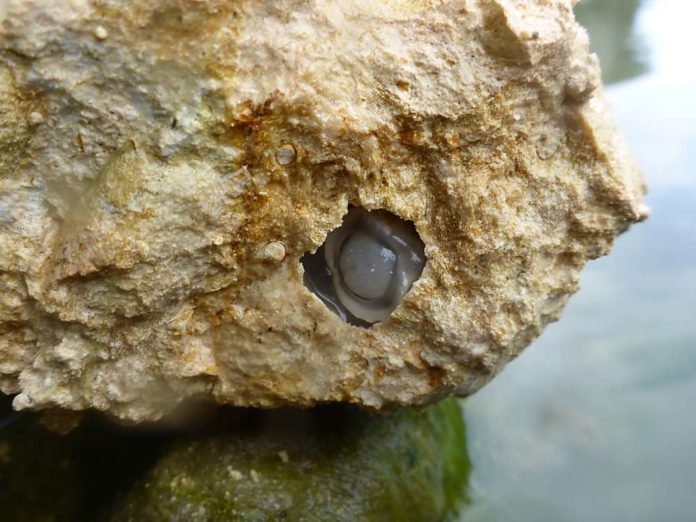

You’d think an animal that pulverizes rock must be a hardy creature, but in a twist of evolution only Mother Nature can fashion, it is a soft, plump creature that chows down on rock and poops out the remains as sand.
The shipworm was found in the low banks of the Abatan River in the Philippines. Scientists were first tipped off to the species (Lithoredo abatanica) by locals who told tales of a creature called “antingaw” that eats rock and is given to young mothers to induce lactation.
The researchers investigated the scene with a hammer and chisel in hand and “splashed around in the river,” much to the bemusement of the locals. They discovered that these mollusks do indeed munch their way through limestone bedrock, burrowing thick tunnels with their pudgy bodies.
“Cracking open the rock and seeing these plump little worms flop out was really, really cool,” said lead author Reuben Shipway, a postdoctoral researcher at Northeastern University, to IFLScience. “We knew we had hit shipworm gold.
“Most shipworms are long, skinny, and worm-like – usually as big as your pinky in terms of thickness, so these ones are really quite different,” added Shipway. “These animals are quite chubby, robust. They look really different. Where they get their nutrition we don’t know.”
Shipworms are so-named for their wood-eating proclivities, devouring their way through ship bottoms, docks, and wood submerged from wrecks. They have gained notoriety over the past couple of millennia as a threat to sailing expeditions. Perhaps most famously, Christopher Columbus’ fourth voyage was besieged by shipworms boring honeycomb-like holes into his vessel off the coast of Jamaica.
Until now, all previous shipworms bore through wood, but not so it seems for this soft-bodied, inch-thick mollusk. In fact, the Abatan River is the only region on Earth that we know of where creatures like this exist. The team believes L. abatanica is a dominant ecosystem engineer in its freshwater habitat, driving niche creation and complexity that likely alters the course of the river in profound ways.
“These animals will actually change the course of the river over time, and what they essentially do is break up these really, really big pieces of bedrock that form the foundation of this river and they basically just turn it into sand,” said Shipway. “This process is called macrobioerosion and has only been seen very rarely and recently in a freshwater environment.
“The burrows that these animals leave behind are habitat for lots of other creatures: small fish live in these burrows, shrimp, crabs, all kinds of small invertebrates.”
How exactly L. abatanica performs this digestive feat, however, remains to be solved. When the team dissected and analyzed the shipworm’s guts, it was full of mineral content matching the stone they burrow in. Many invertebrate species burrow in stone, but none to the team’s knowledge actually ingest the substance too.
“Most other shipworms are heavily adapted for wood digestion, so they have these really small, fine sharp denticles,” said Shipway. “But in this rock borer, the shells have these structures on them that look like shovels for more coarse excavation of the rock. They have this big, thick muscle that attaches to the valve and powers this drilling through the rock.”
The team presents many theories for why they’ve adapted to eat rock. For example, the rocks may help with digestion similar to the gizzard stones of certain birds and reptiles. Alternatively, it’s also possible that like other shipworm members, they utilize a symbiont-dependent mode of digestion.
“Lots of other species of shipworms rely on their gill symbionts to provide the nutrition. Our next research priority is to check whether these symbionts are present in these gills and try to figure out if they are helping to provide nutrition for these animals.”
The locals were essential in guiding the team to these one-of-a-kind rock munchers, but the discovery would not have been possible had they not been alerted to the existence of the creature based on the efforts of an expedition by the Museum d’Histoire Naturelle in Paris, led by Philippe Bouchet. The study, published in the journal Proceedings of the Royal Society B, was part of a larger project under the Philippine Mollusk Symbiont (PMS) International Cooperative Biodiversity Group (ICBG).
“The purpose of this group is to discover new biodiversity and try to discover drugs from that biodiversity,” said Shipway.
Source: iflScience.com/Matzav





